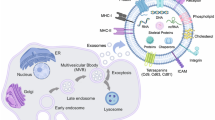Abstract
Since the transferrin receptor (CD71 or TFRC) is known to be highly expressed in numerous cancers, CD71 has become an attractive target in cancer research. Acquiring specific molecular probes for CD71, such as small molecular ligands, aptamers, peptides, or antibodies, is of great importance for cancer cell recognition and capture. In this work, we chose CD71 as the target for phage display, and after four rounds of positive selection and one round of negative selection, the specific phage library was enriched. After verification and sequence analysis, six peptides were identified to be able to bind to CD71 with high specificity. The specific recognition of the CD71-positive cells was confirmed by flow cytometry and confocal microscopy. Competition experiments demonstrated that peptide Y1 and transferrin (TF) were bound to distinct sites on CD71, indicating that peptide Y1 could replace TF as a potential probe for cell imaging and drug delivery, thus avoiding competition by endogenous TF and side effects.

Six peptides were successfully isolated using in vitro biopanning against CD71 with high specificity and affinity. Peptides Y1 and Y2 would be powerful tools in biosensors and biomedicine due to their unique properties.





Similar content being viewed by others
References
Jemal A, Bray F, Center MM, Ferlay J, Ward E, Forman D. Global cancer statistics. CA Cancer J Clin. 2011;61(2):69–90.
Oken MM, Creech RH, Tormey DC, Horton J, Davis TE, McFadden ET, et al. Toxicity and response criteria of the Eastern Cooperative Oncology Group. Am J Clin Oncol Cancer. 1982;5(6):649–55.
Ferrari M. Cancer nanotechnology: opportunities and challenges. Nat Rev Cancer. 2005;5(3):161–71.
Allen TM, Cullis PR. Drug delivery systems: entering the mainstream. Science. 2004;303(5665):1818–22.
Mo Z-C, Ren K, Liu X, Tang Z-L, Yi G-H. A high-density lipoprotein-mediated drug delivery system. Adv Drug Deliv Rev. 2016;106:132–47.
Neves AR, Queiroz JF, Reis S. Brain-targeted delivery of resveratrol using solid lipid nanoparticles functionalized with apolipoprotein E. J Nanobiotechnol. 2016;14:27–43.
Pan WH, Kastin AJ, Zankel TC, van Kerkhof P, Terasaki T, Bu GJ. Efficient transfer of receptor-associated protein (RAP) across the blood-brain barrier. J Cell Sci. 2004;117(21):5071–8.
Salvati A, Pitek AS, Monopoli MP, Prapainop K, Bombelli FB, Hristov DR, et al. Transferrin-functionalized nanoparticles lose their targeting capabilities when a biomolecule corona adsorbs on the surface. Nat Nanotechnol. 2013;8(2):137–43.
Tomita M, Wakabayashi H, Shin K, Yamauchi K, Yaeshima T, Iwatsuki K. Twenty-five years of research on bovine lactoferrin applications. Biochimie. 2009;91(1):52–7.
Kuo Y-C, Chao I-W. Conjugation of melanotransferrin antibody on solid lipid nanoparticles for mediating brain cancer malignancy. Biotechnol Prog. 2016;32(2):480–90.
Farooqi IS, Jebb SA, Langmack G, Lawrence E, Cheetham CH, Prentice AM, et al. Effects of recombinant leptin therapy in a child with congenital leptin deficiency. N Engl J Med. 1999;341(12):879–84.
Jefferies WA, Brandon MR, Hunt SV, Williams AF, Gatter KC, Mason DY. Transferrin receptor on endothelium of brain capillaries. Nature. 1984;312(5990):162–3.
Shindelman JE, Ortmeyer AE, Sussman HH. Demonstration of the transferrin receptor in human breast cancer tissue. Potential marker for identifying dividing cells. Int J Cancer. 1981;27(3):329–34.
Walker RA, Day SJ. Transferrin receptor expression in non-malignant and malignant human breast tissue. J Pathol. 1986;148(3):217–24.
Dixit S, Novak T, Miller K, Zhu Y, Kenney ME, Broome A-M. Transferrin receptor-targeted theranostic gold nanoparticles for photosensitizer delivery in brain tumors. Nano. 2015;7(5):1782–90.
Singh R, Norret M, House MJ, Galabura Y, Bradshaw M, Ho D, et al. Dose-dependent therapeutic distinction between active and passive targeting revealed using transferrin-coated PGMA nanoparticles. Small. 2016;12(3):351–9.
Liu K, Dai L, Li C, Liu J, Wang L, Lei J. Self-assembled targeted nanoparticles based on transferrin-modified eight-arm-polyethylene glycol–dihydroartemisinin conjugate. Sci Rep. 2016;6:29461–72.
Lee JH, Engler JA, Collawn JF, Moore BA. Receptor mediated uptake of peptides that bind the human transferrin receptor. Eur J Biochem. 2001;268(7):2004–12.
Kim S, Choi SJ. Identification of a transferrin receptor binding peptide from a phage-displayed peptide library. J Life Sci. 2008;18(3):298–303.
Dai XY, Xiong YL, Xu DD, Li LY, Su ZJ, Zhang QH, et al. TfR binding peptide screened by phage display technology—characterization to target cancer cells. Trop J Pharm Res. 2014;13(3):331–8.
Acknowledgments
We thank the National Science Foundation of China (81602206, 21325522, 21422506, 21435004, 21521004), National Basic Research Program of China (2013CB933703), Program for Changjiang Scholars and Innovative Research Teams in University (IRT13036), National Found for Fostering Talents of Basic Science (NFFTBS, J1310024), and China Postdoctoral Science Foundation (2016M592089) for their financial support.
Author information
Authors and Affiliations
Corresponding authors
Ethics declarations
Conflict of interest
The authors declare that they have no conflict of interest.
Additional information
Published in the topical collection celebrating ABCs 16th Anniversary.
Electronic supplementary material
ESM 1
(PDF 669 kb)
Rights and permissions
About this article
Cite this article
Tan, Y., Liu, W., Zhu, Z. et al. Selection and identification of transferrin receptor-specific peptides as recognition probes for cancer cells. Anal Bioanal Chem 410, 1071–1077 (2018). https://doi.org/10.1007/s00216-017-0664-4
Received:
Revised:
Accepted:
Published:
Issue Date:
DOI: https://doi.org/10.1007/s00216-017-0664-4




